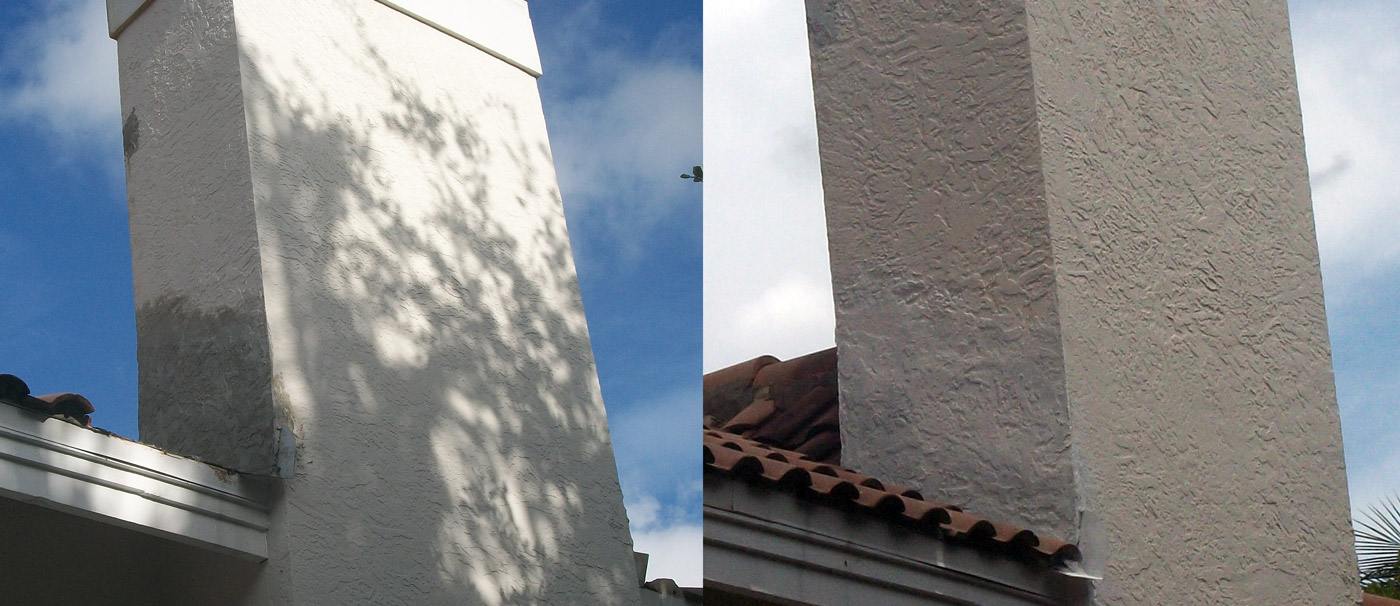
All About Stucco and Stucco Chimney Repair
What is Stucco?
Stucco is a type of plaster used to cover construction surfaces such as metal, concrete, cinder blocks and many other materials. Stucco was easily applied and molded and was used not only to cover less visually appealing surfaces but to create aesthetically pleasing ones. Until the turn of the 1900s, stucco and plaster were considered to be of the same composition, differing only in that plaster was used inside buildings, and stucco found outside. This was when increasing the durability of stucco was desired so various compositions were attempted.
What is Stucco Made of?
Traditionally, like plaster and mortar, stucco was made from lime, sand and water. The mid-1900s saw the inclusion of animal or plant fiber for added strength. Later, the substitution of Portland cement for the lime was done in an effort to increase the durability of the stucco. Lime stucco is considered to be relatively hard but could potentially be broken or chipped by hand without much force. Portland stucco, although much harder, is brittle and can crack easily if its base is not stable.
When Do We Use Stucco?
Traditional stucco was used primarily as an aesthetic yet durable and water-resistant wall covering. It can also be used for chimneys, and architectural and sculptural additions. In some parts of the United States, especially Florida, stucco is predominantly an exterior feature in both residential and commercial construction.
How do We Apply Stucco?
Although initially applied to bare materials, it wasn’t long before a wooden lattice network, or “lath”, was introduced as the base layer to supply support to wet stucco as well as tensile strength to cured stucco. Now, modern Portland cement stucco is applied to a metal lattice or “mesh”. The mesh itself is tightly secured to the surface with nails or screws.
Stucco was applied in three layers: the scratch coat, leveling coat, and the finish coat.
The scratch coat can be applied by hand or by machine but its surface layer must have horizontal or criss-cross pattern troweled into it for added stability of the next layer. The first layer is allowed to fully cure before the second is added. The leveling coat is quite thick and with the help of many tools, is used to level out the layer of stucco to provide a smooth surface for the finish coat. This second layer should be given 7-10 days to fully cure. The finish coat carries all the aesthetic value and can be troweled smooth, hand-textured, sculpted, or sprayed – with or without added pigments.
What About Stucco Repairs?
Stucco is a very sturdy material and should last for many years before any repairs are necessary. Although theoretically easy to repair, the reason for the cracking of the stucco should be investigated and this usually requires a professional’s help. All cracks thicker than the width of a credit card should be handled by professionals. Repairing stucco is much the same process as applying the stucco; with the addition of removal of the previous stucco. However, if done incorrectly, inexperienced work can result in many numerous, avoidable repairs in the future.
Pre-mixed acrylic finishes have the ability to stretch over and fill in cracks in the surface stucco. This will, ultimately, improve the appearance of your stucco as well as limit further moisture leakage and damage.
If you have a stucco wall constructed in 1960-1970s, there is a chance you have what is called ‘hard coating’. This potential fourth layer of stucco is very heavy, inflexible, prone to cracking and is very difficult to repair.
At AABCO Roofing Inc, we pride ourselves in the quality of our work; restoring and maintaining your property to its peak condition. Contact us for stucco application and repairs – interior or exterior, residential or commercial!
